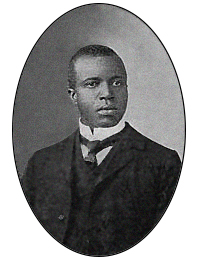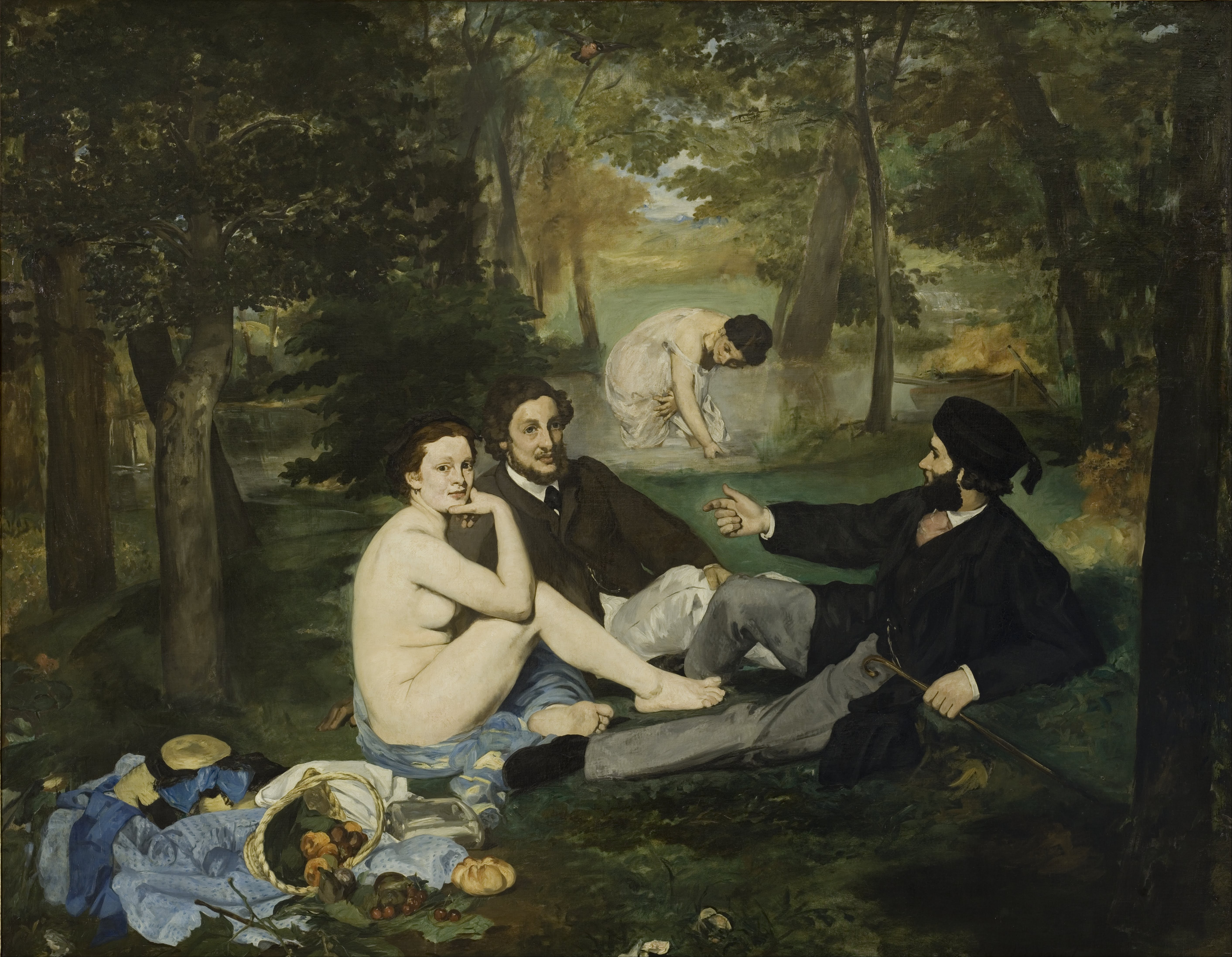|
Parade (ballet)
''Parade'' is a ballet choreographed by Leonide Massine, with music by Erik Satie and a one-act scenario by Jean Cocteau. The ballet was composed in 1916–17 for Sergei Diaghilev's Ballets Russes. The ballet premiered on Friday, May 18, 1917 at the Théâtre du Châtelet in Paris, with costumes and sets designed by Pablo Picasso, choreography by Léonide Massine (who danced), and the orchestra conducted by Ernest Ansermet. Overview The idea of the ballet seems to have come from Jean Cocteau. He had heard Satie's '' Trois morceaux en forme de poire'' ("Three Pieces in the Shape of a Pear") in a concert and thought of writing a ballet scenario to such music. Satie welcomed the idea of composing ballet music (which he had never done before) but refused to allow any of his previous compositions to be used for the occasion, so Cocteau started writing a scenario (the theme being a publicity parade in which three groups of circus artists try to attract an audience to an indoor performan ... [...More Info...] [...Related Items...] OR: [Wikipedia] [Google] [Baidu] |
Léonide Massine
Leonid Fyodorovich Myasin (russian: Леони́д Фёдорович Мя́син), better known in the West by the French transliteration as Léonide Massine (15 March 1979), was a Russian choreographer and ballet dancer. Massine created the world's first symphonic ballet, ''Les Présages'', and many others in the same vein. Besides his "symphonic ballets," Massine choreographed many other popular works during his long career, some of which were serious and dramatic, and others lighthearted and romantic. He created some of his most famous roles in his own comic works, among them the Can-Can Dancer in ''La Boutique fantasque'' (1919), the Hussar in ''Le Beau Danube'' (1924), and, perhaps best known of all, the Peruvian in ''Gaîté Parisienne'' (1938). Today his oeuvre is represented by his son Theodor Massine. Early life and education Massine was born into a musical family on 9 August 1895 in Moscow, Russia. His mother was a soprano in the Bolshoi Theater Chorus and his fathe ... [...More Info...] [...Related Items...] OR: [Wikipedia] [Google] [Baidu] |
Costume Design By Pablo Picasso For Serge Diaghilev's Ballets Russes Performance Of Parade At Théâtre Du Châtelet In Paris 18 May, 1917
Costume is the distinctive style of dress or cosmetic of an individual or group that reflects class, gender, profession, ethnicity, nationality, activity or epoch. In short costume is a cultural visual of the people. The term also was traditionally used to describe typical appropriate clothing for certain activities, such as riding costume, swimming costume, dance costume, and evening costume. Appropriate and acceptable costume is subject to changes in fashion and local cultural norms. This general usage has gradually been replaced by the terms "dress", "attire", "robes" or "wear" and usage of "costume" has become more limited to unusual or out-of-date clothing and to attire intended to evoke a change in identity, such as theatrical, Halloween, and mascot costumes. Before the advent of ready-to-wear apparel, clothing was made by hand. When made for commercial sale it was made, as late as the beginning of the 20th century, by "costumiers", often women who ran businesses th ... [...More Info...] [...Related Items...] OR: [Wikipedia] [Google] [Baidu] |
Jean Poueigh
Jean Marie Octave Géraud Poueigh (24 February 1876 in Toulouse – 14 October 1958 in Olivet) was a French composer, musicologist, music critic, and folklorist. He wrote music criticism under the pseudonym Octave Séré. Poueigh is known for suing fellow French composer Erik Satie over an insulting postcard. Biography A student at the Schola Cantorum of Paris, Jean Poeigh is the author of works of chamber music, vocal or instrumental, a sonata for violin ..., lyrical works: ''Perkain'', opera based on a Basque legend by Pierre Harispe, libretto Pierre-Barthélemy Gheusi, presented at the Bordeaux opera 16 January 1931, sets and costumes by Ramiro Arrue), ''le Roi de Camargue'' (performed in Marseille 21 May 1948). At the same time, he wrote much as a musical critic in the ''Ère nouvelle''. After the performance of the ballet ''Parade'' (1917), he wrote a virulent criticism and Érik Satie sent him some incendiary letters, the most famous being thus written: "Monsieur and de ... [...More Info...] [...Related Items...] OR: [Wikipedia] [Google] [Baidu] |
Ragtime
Ragtime, also spelled rag-time or rag time, is a musical style that flourished from the 1890s to 1910s. Its cardinal trait is its syncopated or "ragged" rhythm. Ragtime was popularized during the early 20th century by composers such as Scott Joplin, James Scott and Joseph Lamb. Ragtime pieces (often called "rags") are typically composed for and performed on piano, though the genre has been adapted for a variety of instruments and styles. " Maple Leaf Rag", "The Entertainer", "Fig Leaf Rag", " Frog Legs Rag", and " Sensation Rag" are among the most popular songs of the genre. The genre emerged from African American communities in the Southern and Midwestern United States, evolving from folk and minstrel styles and popular dances such as the cakewalk and combining with elements of classical and march music. Ragtime significantly influenced the development of jazz. In the 1960's, the genre had began to be revived with the publication '' The All Played Ragtime'' and artist ... [...More Info...] [...Related Items...] OR: [Wikipedia] [Google] [Baidu] |
The Rite Of Spring
''The Rite of Spring''. Full name: ''The Rite of Spring: Pictures from Pagan Russia in Two Parts'' (french: Le Sacre du printemps: tableaux de la Russie païenne en deux parties) (french: Le Sacre du printemps, link=no) is a ballet and orchestral concert work by the Russian composer Igor Stravinsky. It was written for the 1913 Paris season of Sergei Diaghilev's Ballets Russes company; the original choreography was by Vaslav Nijinsky with stage designs and costumes by Nicholas Roerich. When first performed at the Théâtre des Champs-Élysées on 29 May 1913, the avant-garde nature of the music and choreography List of classical music concerts with an unruly audience response, caused a sensation. Many have called the first-night reaction a "riot" or "near-riot", though this wording did not come about until reviews of later performances in 1924, over a decade later. Although designed as a work for the stage, with specific passages accompanying characters and action, the music achieved ... [...More Info...] [...Related Items...] OR: [Wikipedia] [Google] [Baidu] |
Igor Stravinsky
Igor Fyodorovich Stravinsky (6 April 1971) was a Russian composer, pianist and conductor, later of French (from 1934) and American (from 1945) citizenship. He is widely considered one of the most important and influential composers of the 20th century and a pivotal figure in modernist music. Stravinsky's compositional career was notable for its stylistic diversity. He first achieved international fame with three ballets commissioned by the impresario Sergei Diaghilev and first performed in Paris by Diaghilev's Ballets Russes: '' The Firebird'' (1910), '' Petrushka'' (1911), and '' The Rite of Spring'' (1913). The last transformed the way in which subsequent composers thought about rhythmic structure and was largely responsible for Stravinsky's enduring reputation as a revolutionary who pushed the boundaries of musical design. His "Russian phase", which continued with works such as '' Renard'', '' L'Histoire du soldat,'' and '' Les noces'', was followed in the 1920s by a ... [...More Info...] [...Related Items...] OR: [Wikipedia] [Google] [Baidu] |
Succès De Scandale
''Succès de scandale'' (French for "success from scandal") is a term for any artistic work whose success is attributed, in whole or in part, to public controversy surrounding the work. In some cases the controversy causes audiences to seek out the work for its titillating content, while in others it simply heightens public curiosity. This concept is echoed by the phrase "there is no such thing as bad publicity". ''Belle Époque'' The ''Belle Époque'' ('beautiful era') in Paris, roughly from 1871–1914, was notable for many ''succès de scandale''. This was also where and when the term originated. In the examples below, artists started their careers with some sort of scandal, with some connection to turn-of-the-century Paris. In other cities, provoking a scandal appeared more risky, as Oscar Wilde found out shortly after his relatively "successful" Parisian scandal ('' Salomé'' in 1894, portraying the main character as a necrophile). * '' Le déjeuner sur l'herbe'' ("Lunc ... [...More Info...] [...Related Items...] OR: [Wikipedia] [Google] [Baidu] |
Milk Bottle
Glass milk bottles are glass bottles used for milk and they are generally reusable and returnable. Milk bottles are used mainly for doorstep delivery of fresh milk by milkmen as retail store sale is available in some regions (with bottle deposit). After customers have finished the milk, they are expected to rinse the empty bottles and leave them on the doorstep for collection or return it to the retail store. The standard size of a bottle varies with location, common sizes are pint, quart, litre, etc. More recently, plastic bottles have been commonly used for milk. These are often made of high-density polyethylene (HDPE), which is used only once, and are easily recyclable. Other plastic milk containers are also in use. History Before the emergence of milk bottles, milkmen would fill the customer's jugs. For many collectors, milk bottles carry a nostalgic quality of a previous era. The most prized milk bottles are embossed or pyroglazed (painted) with names of dair ... [...More Info...] [...Related Items...] OR: [Wikipedia] [Google] [Baidu] |
Foghorn
A foghorn or fog signal is a device that uses sound to warn vehicles of navigational hazards such as rocky coastlines, or boats of the presence of other vessels, in foggy conditions. The term is most often used in relation to marine transport. When visual navigation aids such as lighthouses are obscured, foghorns provide an audible warning of rock outcrops, shoals, headlands, or other dangers to shipping. Description All foghorns use a vibrating column of air to create an audible tone, but the method of setting up this vibration differs. Some horns, such as the Daboll trumpet, used vibrating plates or metal reeds, a similar principle to a modern electric car horn. Others used air forced through holes in a rotating cylinder or disk, in the same manner as a siren. Semi-automatic operation of foghorns was achieved by using a clockwork mechanism (or "coder") to sequentially open the valves admitting air to the horns; each horn was given its own timing characteristics to help ... [...More Info...] [...Related Items...] OR: [Wikipedia] [Google] [Baidu] |
Typewriter
A typewriter is a mechanical or electromechanical machine for typing characters. Typically, a typewriter has an array of keys, and each one causes a different single character to be produced on paper by striking an inked ribbon selectively against the paper with a type element. At the end of the nineteenth century, the term 'typewriter' was also applied to a ''person'' who used such a device. The first commercial typewriters were introduced in 1874, but did not become common in offices until after the mid-1880s. The typewriter quickly became an indispensable tool for practically all writing other than personal handwritten correspondence. It was widely used by professional writers, in offices, business correspondence in private homes, and by students preparing written assignments. Typewriters were a standard fixture in most offices up to the 1980s. Thereafter, they began to be largely supplanted by personal computers running word processing software. Nevertheless, type ... [...More Info...] [...Related Items...] OR: [Wikipedia] [Google] [Baidu] |
Costume
Costume is the distinctive style of dress or cosmetic of an individual or group that reflects class, gender, profession, ethnicity, nationality, activity or epoch. In short costume is a cultural visual of the people. The term also was traditionally used to describe typical appropriate clothing for certain activities, such as riding costume, swimming costume, dance costume, and evening costume. Appropriate and acceptable costume is subject to changes in fashion and local cultural norms. This general usage has gradually been replaced by the terms "dress", "attire", "robes" or "wear" and usage of "costume" has become more limited to unusual or out-of-date clothing and to attire intended to evoke a change in identity, such as theatrical, Halloween, and mascot costumes. Before the advent of ready-to-wear apparel, clothing was made by hand. When made for commercial sale it was made, as late as the beginning of the 20th century, by "costumiers", often women who ran businesses th ... [...More Info...] [...Related Items...] OR: [Wikipedia] [Google] [Baidu] |
Surrealism
Surrealism is a cultural movement that developed in Europe in the aftermath of World War I in which artists depicted unnerving, illogical scenes and developed techniques to allow the unconscious mind to express itself. Its aim was, according to leader André Breton, to "resolve the previously contradictory conditions of dream and reality into an absolute reality, a super-reality", or ''surreality.'' It produced works of painting, writing, theatre, filmmaking, photography, and other media. Works of Surrealism feature the element of surprise, unexpected juxtapositions and '' non sequitur''. However, many Surrealist artists and writers regard their work as an expression of the philosophical movement first and foremost (for instance, of the "pure psychic automatism" Breton speaks of in the first Surrealist Manifesto), with the works themselves being secondary, i.e. artifacts of surrealist experimentation. Leader Breton was explicit in his assertion that Surrealism was, above all, ... [...More Info...] [...Related Items...] OR: [Wikipedia] [Google] [Baidu] |









